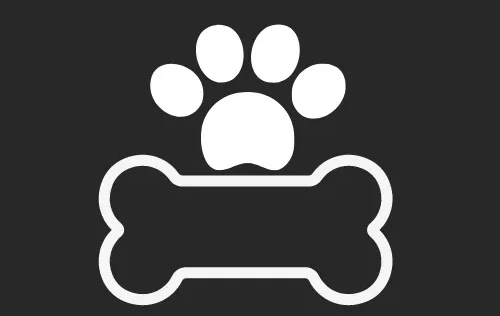How to Treat Dry Skin on Dogs: A Comprehensive Guide
Dry skin is a common issue for dogs that can lead to discomfort and more serious skin conditions if left untreated. Understanding the causes of dry skin and how to effectively treat it is essential for any responsible pet owner. In this guide, we will explore the causes, symptoms, and effective treatments for dry skin in dogs.

Understanding the Causes of Dry Skin in Dogs
Before treating dry skin, it’s important to identify the underlying causes. Here are some common factors that contribute to dry skin in dogs:
Environmental Factors
Seasonal Changes: Dry, cold air during winter can strip moisture from a dog’s skin, leading to dryness. Conversely, hot and humid conditions can also trigger skin issues.
Indoor Heating and Air Conditioning: Prolonged exposure to heated or air-conditioned environments can reduce humidity levels, causing skin to become dry and flaky.
Allergies and Sensitivities
Food Allergies: Certain ingredients in dog food can cause allergic reactions, resulting in dry, itchy skin. Common allergens include grains, beef, and chicken.
Environmental Allergies: Dogs can be allergic to pollen, dust mites, mold, and other environmental irritants that may lead to skin dryness and irritation.
Medical Conditions
Hormonal Imbalances: Conditions like hypothyroidism or Cushing’s disease can disrupt skin health, leading to dryness.
Parasites: Fleas, mites, and ticks can cause skin irritation and lead to excessive scratching, which exacerbates dryness.
Identifying Symptoms of Dry Skin
Recognizing the signs of dry skin in your dog is crucial for effective treatment. Look for the following symptoms:
Visible Flaking and Scaling
If you notice white flakes or scales on your dog’s coat or skin, it may indicate dryness. This can often be seen along the back, tail, and belly.
Itching and Scratching
Dogs with dry skin frequently scratch or bite at their skin. Excessive itching can lead to redness and inflammation.
Red or Inflamed Skin
Look for areas of redness or swelling, which may signify irritation or a secondary infection due to scratching.
Dull or Brittle Coat
A lack of moisture can lead to a dull, brittle coat that lacks luster. This is often accompanied by increased shedding.
Effective Treatments for Dry Skin on Dogs
Once you’ve identified the cause and symptoms of dry skin, you can take steps to treat it effectively. Here are some recommended treatments:
1. Regular Bathing with Moisturizing Shampoo
Using a gentle, moisturizing dog shampoo can help soothe dry skin. Look for products specifically formulated for dry or sensitive skin. Be sure not to bathe your dog too frequently, as this can strip natural oils.
2. Omega-3 Fatty Acid Supplements
Adding omega-3 fatty acids to your dog’s diet can promote healthy skin and a shiny coat. Fish oil supplements are a popular choice, but consult your veterinarian for appropriate dosages.
3. Hydration and Diet
Ensure your dog is well-hydrated by providing fresh water at all times. Additionally, consider switching to a high-quality diet rich in nutrients and fatty acids to support skin health.
4. Topical Treatments
Moisturizing Sprays and Oils: Applying dog-safe moisturizing sprays or oils can help hydrate dry areas. Look for products with natural ingredients like aloe vera or coconut oil.
Anti-itch Creams: If your dog is excessively scratching, topical creams may help relieve discomfort. Always consult your veterinarian before applying any medication.
5. Regular Grooming
Regular brushing helps distribute natural oils throughout your dog’s coat, reducing dryness. It also helps remove dead skin cells and promotes healthy skin.
6. Veterinary Consultation
If dry skin persists despite your efforts, it’s essential to consult your veterinarian. They can rule out underlying health issues and may recommend prescription treatments or medicated shampoos.

Preventing Dry Skin in Dogs
Taking proactive measures can help prevent dry skin from recurring. Here are some tips:
Maintain a Humid Environment
Using a humidifier, especially in winter, can help maintain moisture in the air and prevent dry skin.
Avoid Over-bathing
Limit baths to avoid stripping natural oils from your dog’s skin. Typically, bathing once a month is sufficient unless your dog gets particularly dirty.
Regular Vet Check-ups
Routine veterinary visits can help catch any potential health issues early and keep your dog’s skin and coat healthy.
Conclusion
Dry skin in dogs can be uncomfortable, but with the right treatment and preventive measures, you can help keep your furry friend healthy and happy. Always pay attention to changes in your dog’s skin and coat, and don’t hesitate to seek veterinary advice when needed. By understanding the causes and effective treatments for dry skin, you can ensure your dog enjoys a comfortable and healthy life.
Frequently Asked Questions (FAQs)
What are the common causes of dry skin in dogs?
Common causes include environmental factors, allergies, hormonal imbalances, and certain medical conditions.
How often should I bathe my dog to prevent dry skin?
Generally, bathing your dog once a month is sufficient to maintain cleanliness without stripping natural oils.
Can I use human shampoos on my dog for dry skin?
No, human shampoos can be harsh and strip essential oils from a dog’s skin. Always use products specifically formulated for dogs.
When should I consult a veterinarian about my dog’s dry skin?
If your dog’s dry skin persists despite treatment or is accompanied by severe itching, redness, or other concerning symptoms, consult your veterinarian for a thorough evaluation.






